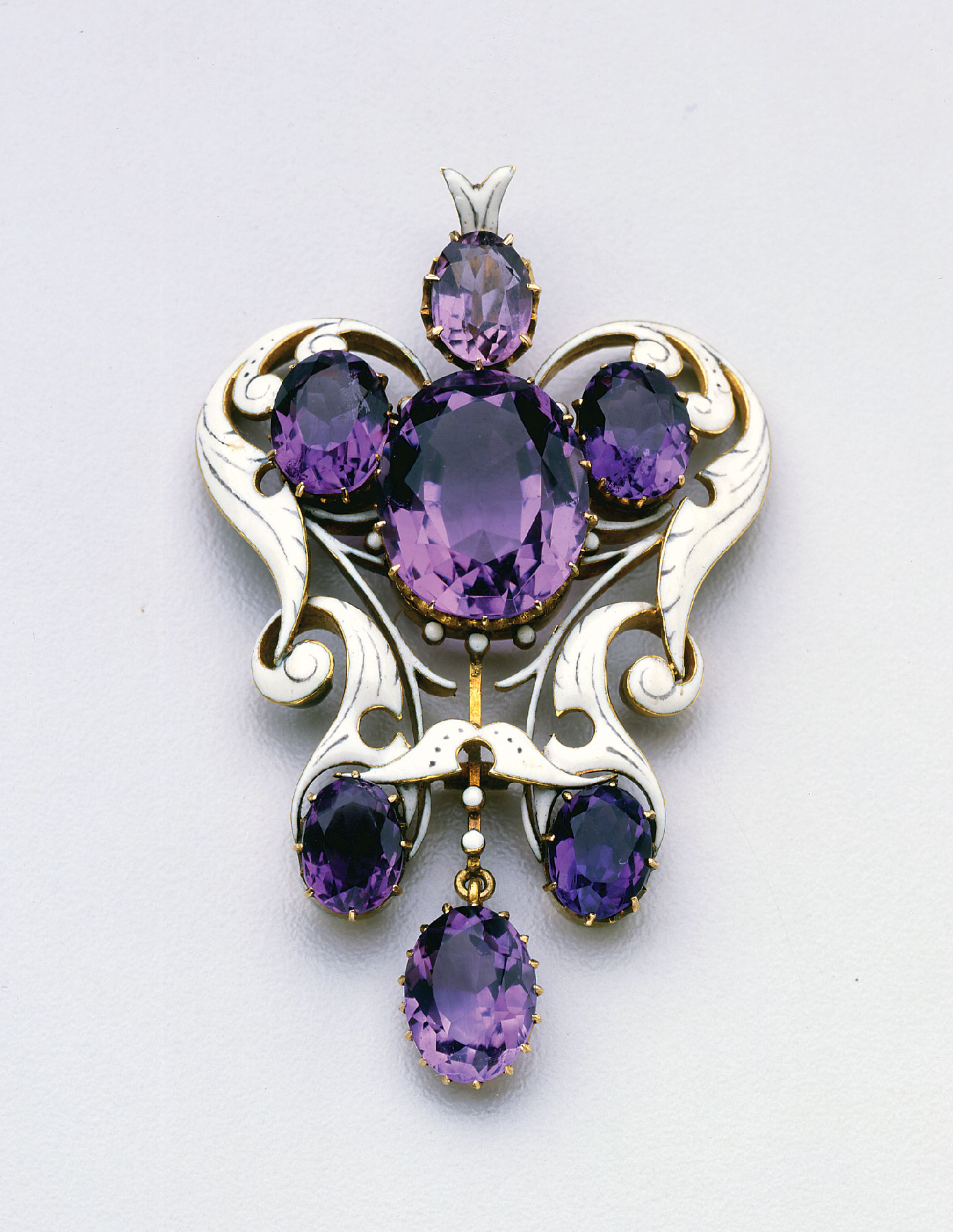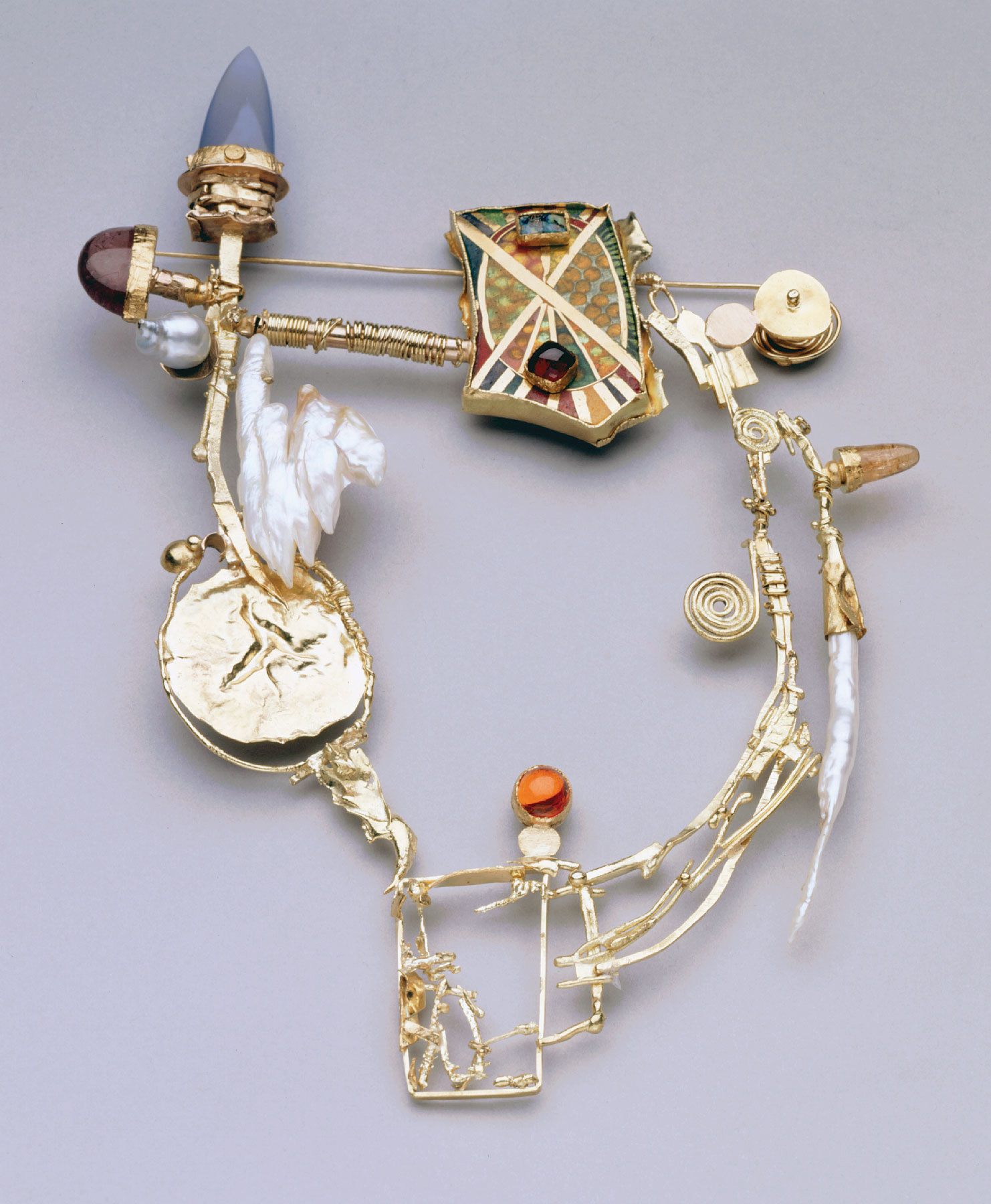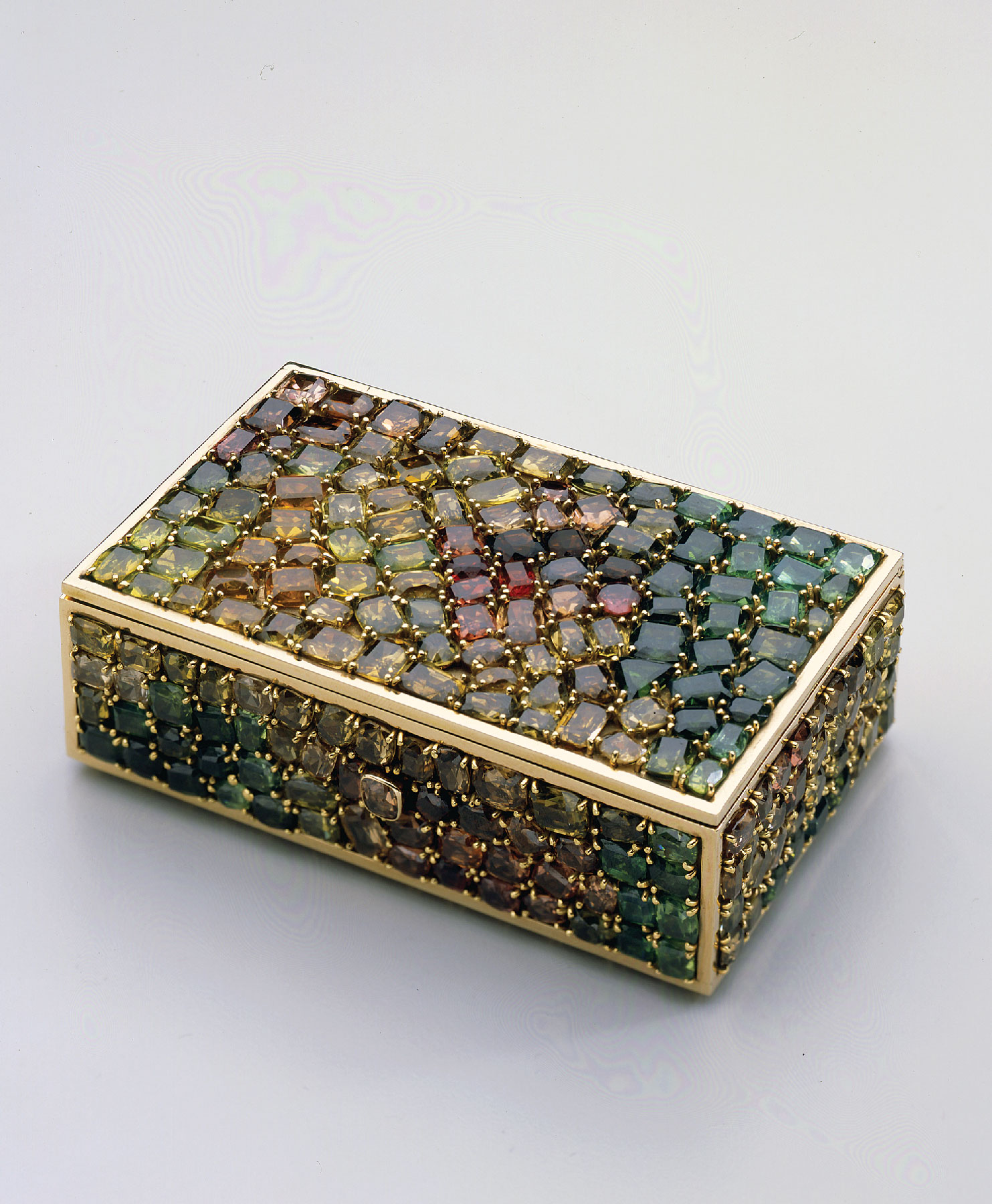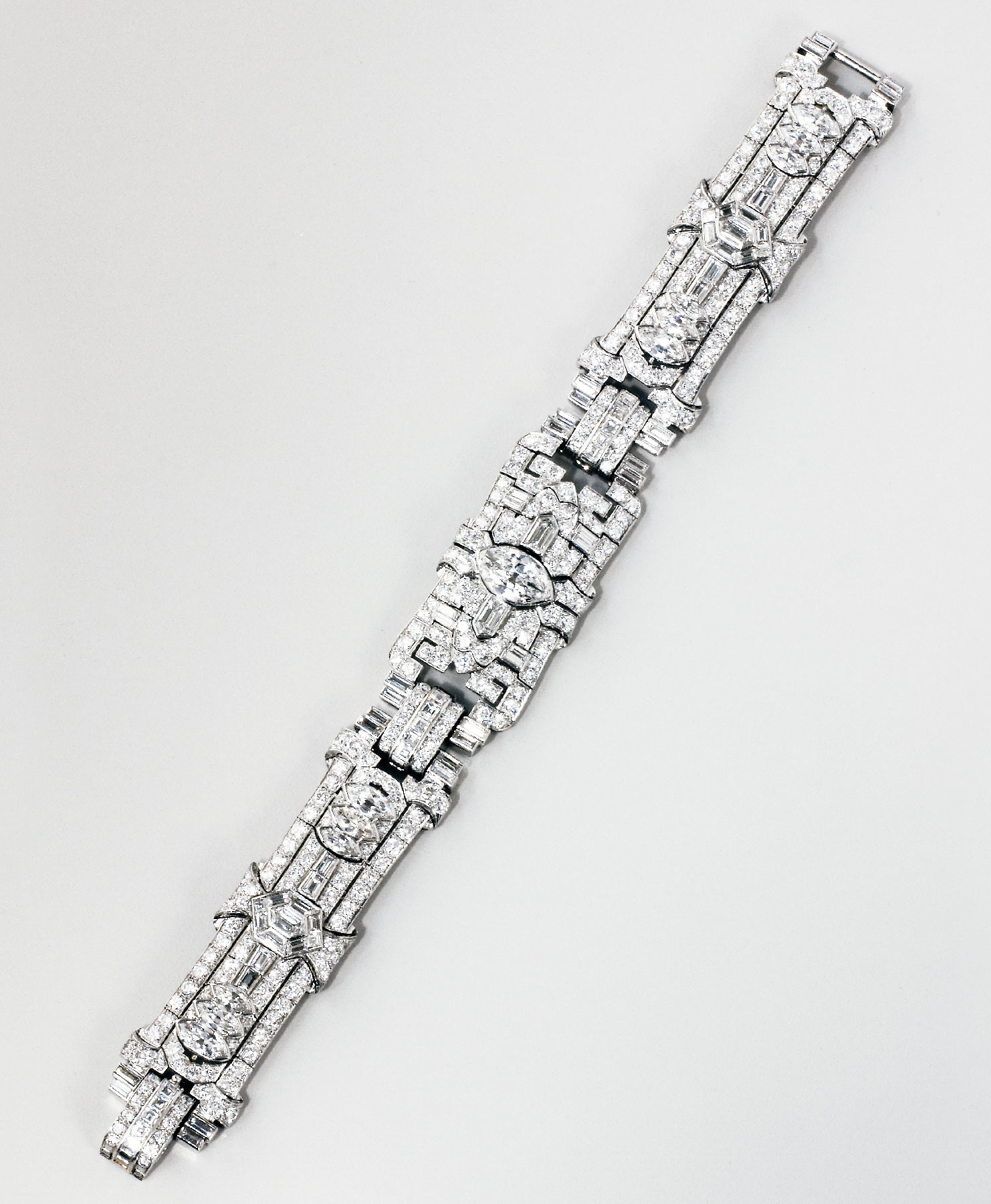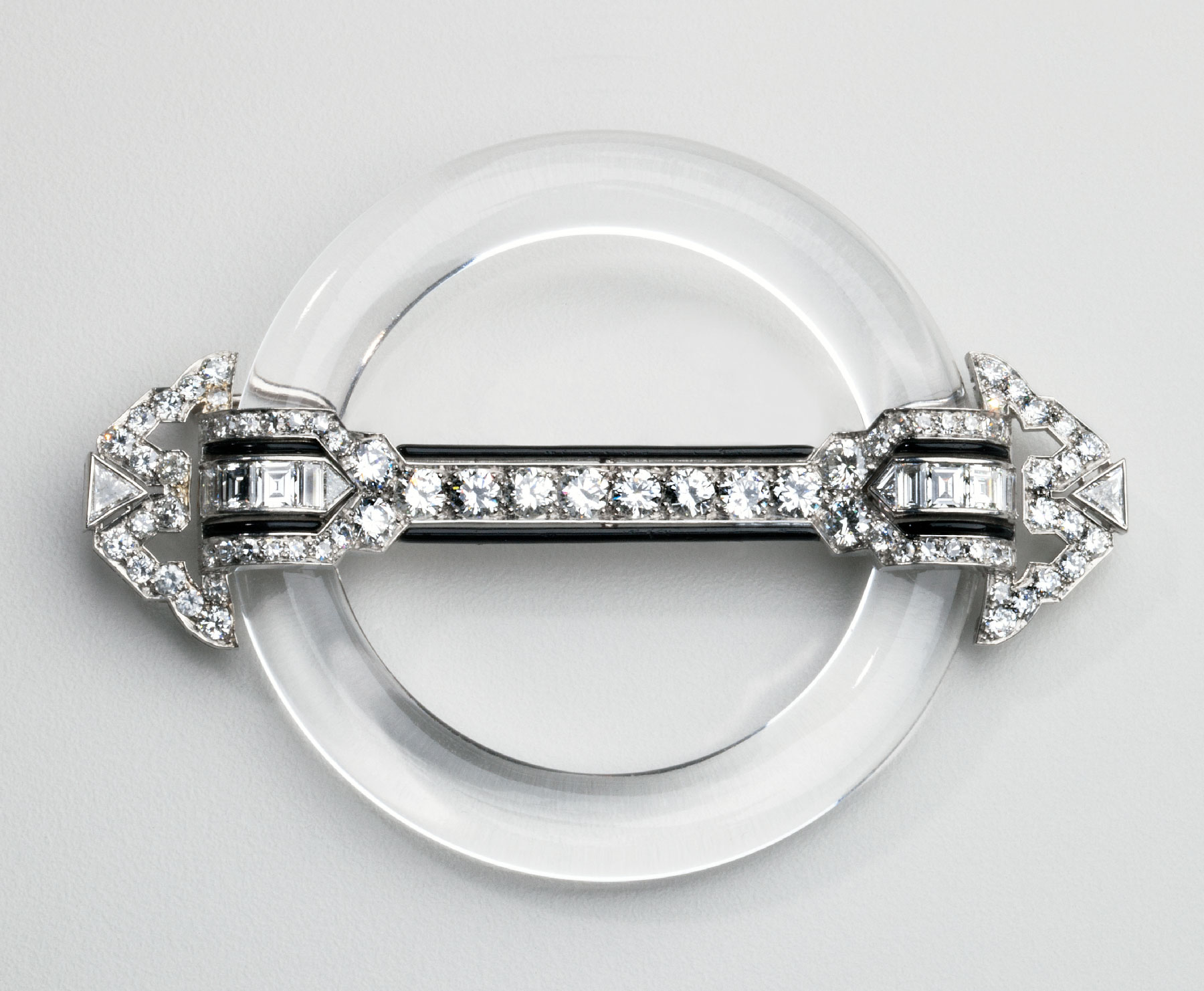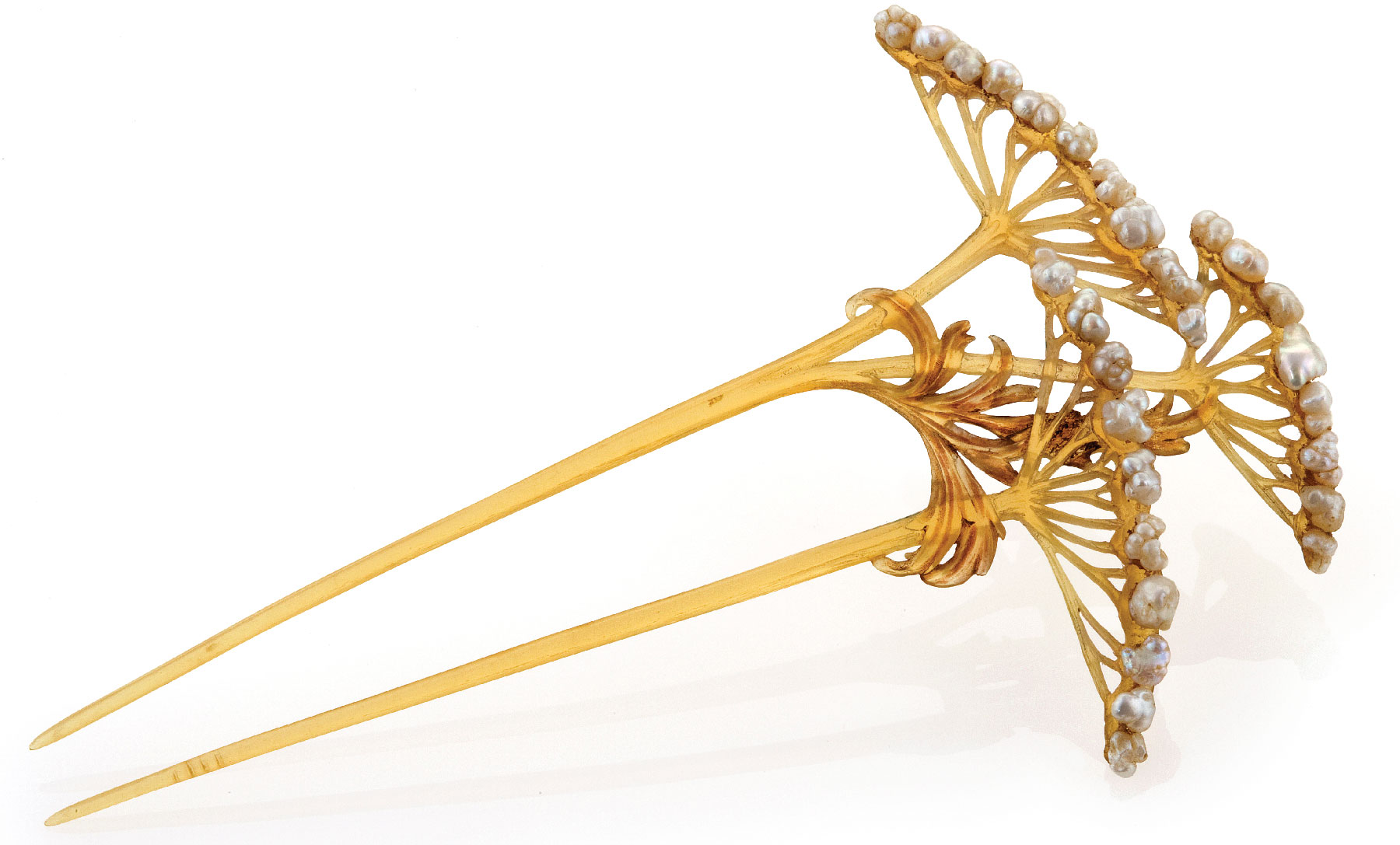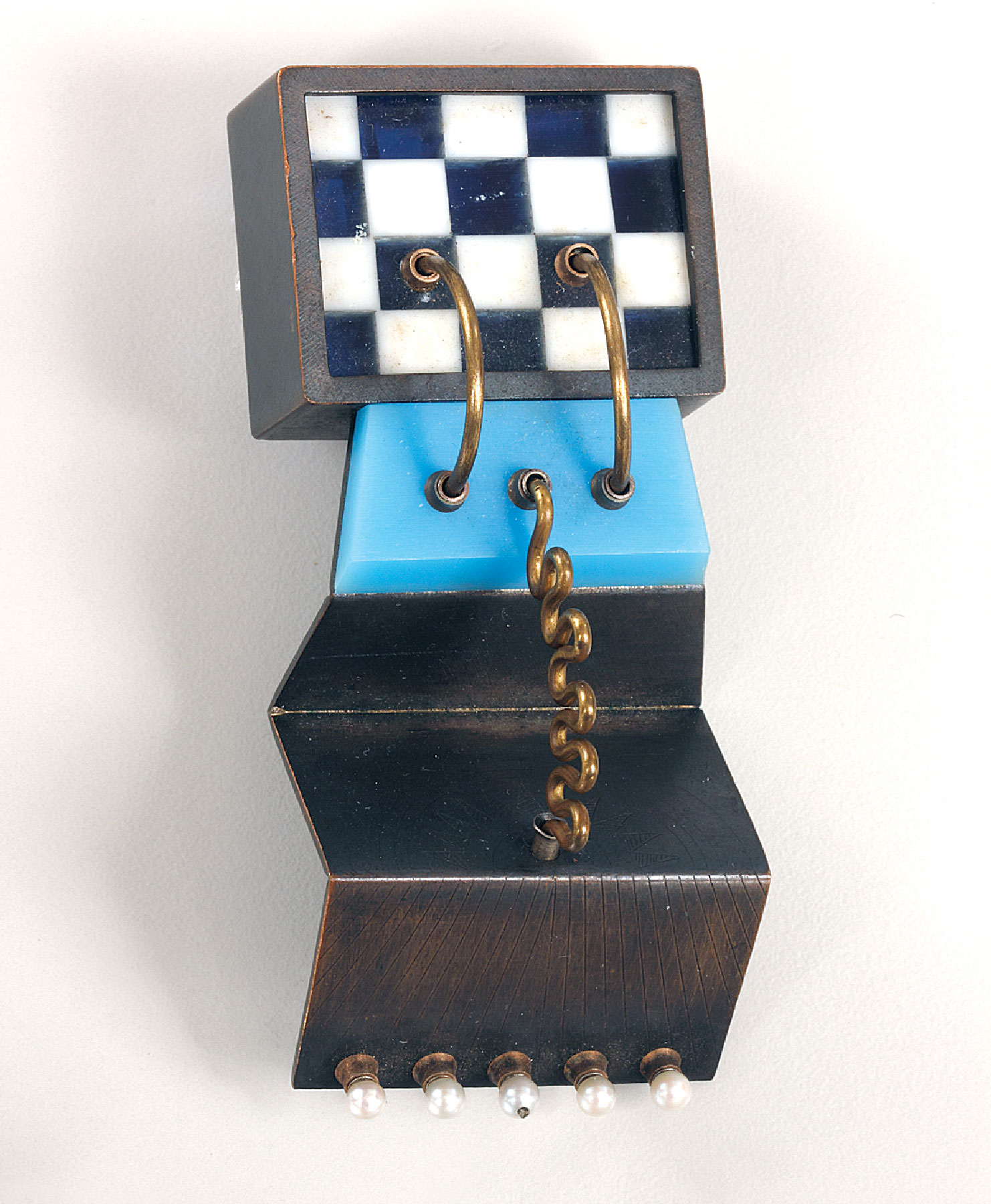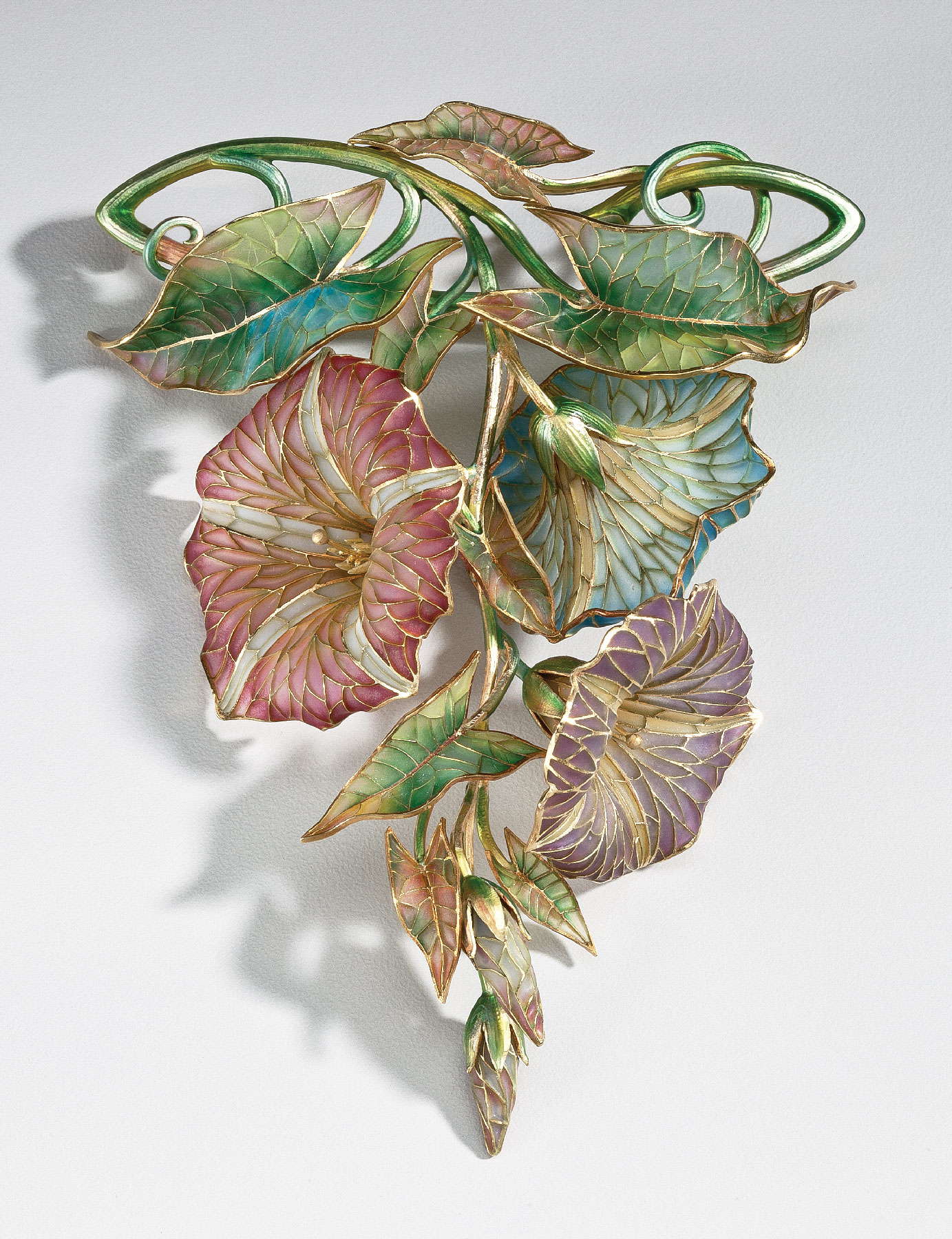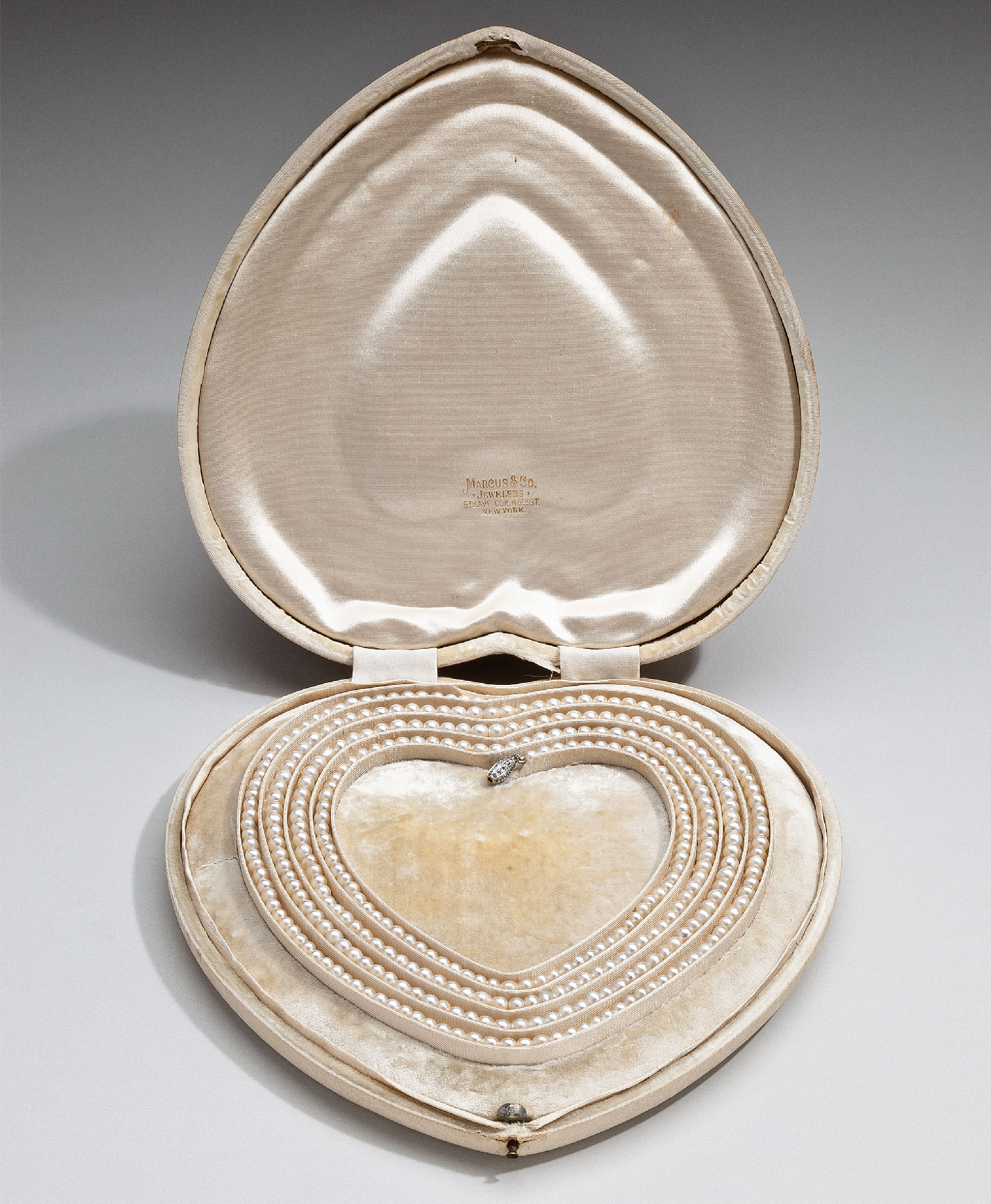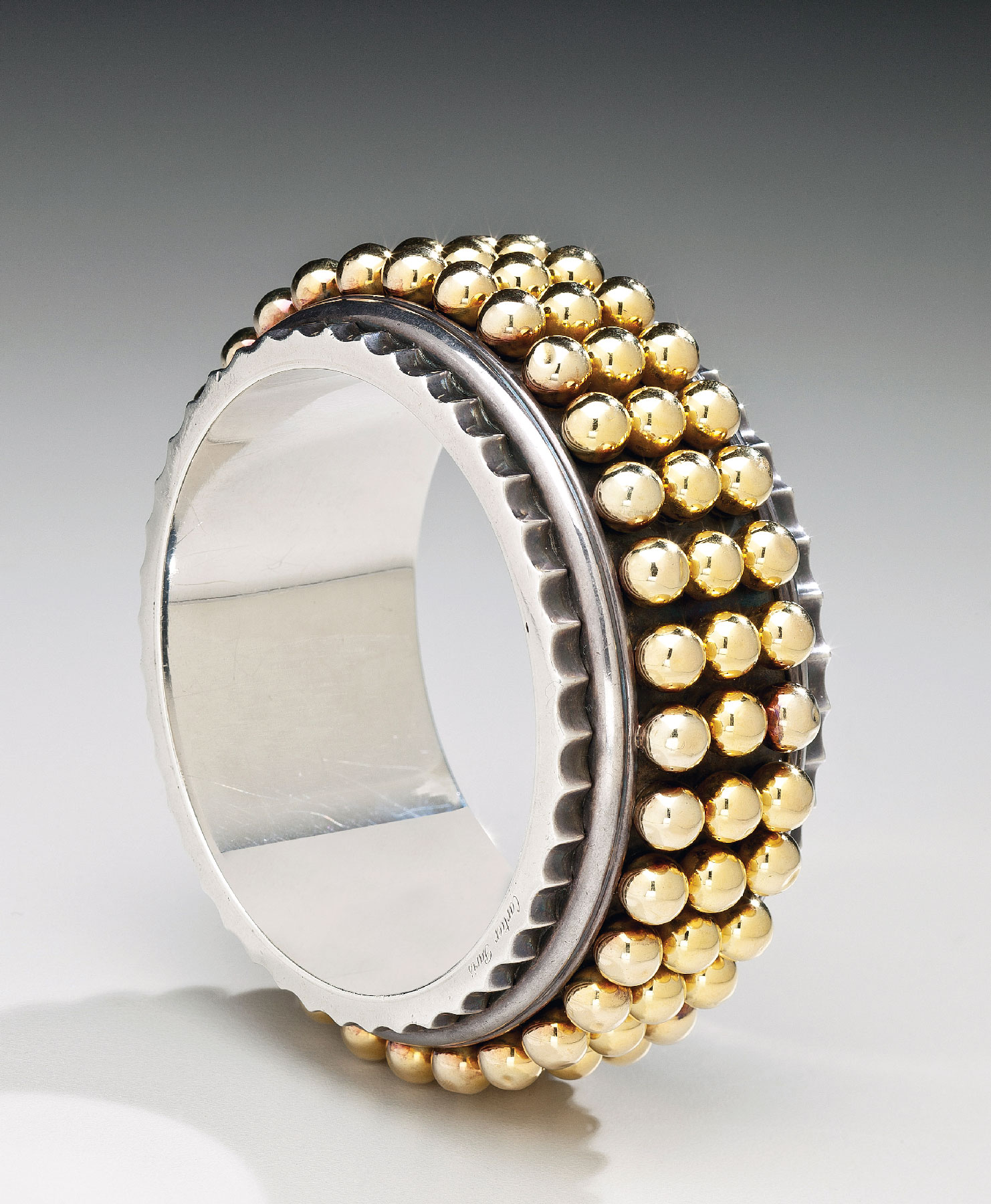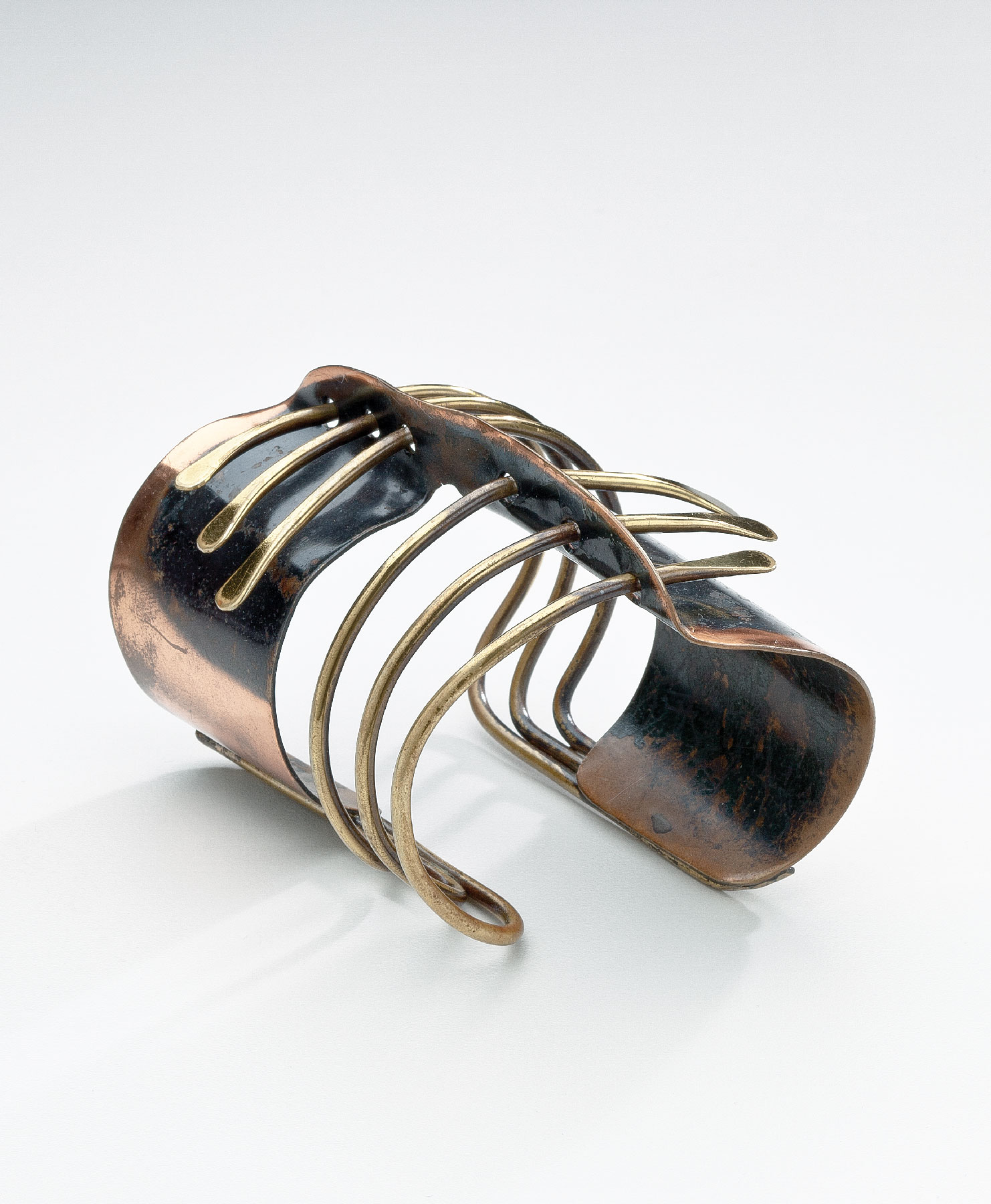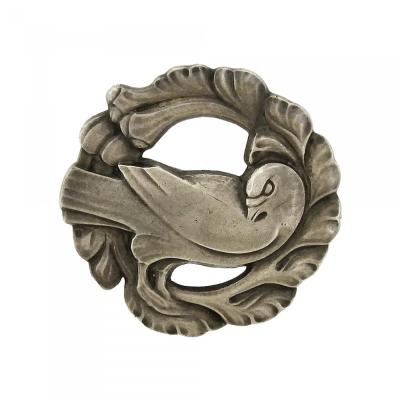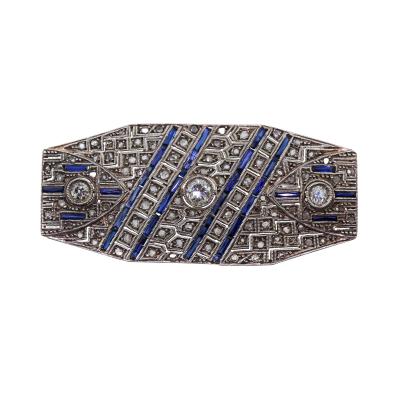Collecting Jewelry at the Newark Museum with an Eye to History and Art
This article was originally published in the Winter 2015 issue of Antiques & Fine Art magazine.
In 2015, the Newark Museum opened its redesigned Lore Ross Jewelry Gallery, with over 150 pieces of jewelry dating from the fifteenth century to the present day. As its title—Jewelry from Pearls to Platinum to Plastic—suggests, the theme of the gallery is materials, both natural and manmade.1 Against the deep aubergine of the walls and fabric, a wild diversity of jewelry is grouped by its material rather than by date of manufacture or cultural meaning.
The first piece of jewelry entered the Newark Museum collection in 1911, when an eighteenth-century gold watch from New York was donated by a trustee.2 From that time until the early 1990s, the collection grew somewhat randomly and entirely by donation. The only exception to that was in 1929, when the museum’s second director, Beatrice Winser, purchased two necklaces from Georg Jensen’s shop in Manhattan. The first pieces of Jensen jewelry to enter a museum collection in the United States, one was a lavaliere set with labradorite, the other a choker set with moonstones. They were the last purchases of jewelry by the museum until 1991.
The unifying theme in collecting jewelry for the museum during the past decade has been to find objects that resonate in multiple ways with the collections already under our stewardship. After a successful exhibition in 1997 that documented the once vast jewelry industry in the city of Newark,3 we decided to develop the non-Newark side of the story, so as to create a broader context for the fourteen-carat gold jewelry products of our local factories. But frankly, any excuse to buy jewelry would have been a good one.
I initially looked at studio jewelry as a way to enhance a neglected aspect of our jewelry holdings. Our first major acquisition was a monumental fibula brooch from 1998 by William Harper (Fig. 1). It evokes images of fifth-century Vandal tribesmen, their rough fur cloaks fastened with huge fibulae. Part of a series of large brooches produced along with hinged containers (called casks) in which to store them, this work is a tour-de-force of goldsmithing, enameling, and the use of gemstones for coloristic and textural effect.
This purchase of the modern craft brooch led to the acquisition of Arts and Crafts pieces by Chicago’s LeBolt & Co. and Boston’s Edward Oakes, and in turn, to the British roots of America’s Arts & Crafts upsurge, with the acquisition of a rare piece by England’s first professional woman studio jeweler, Charlotte Newman (Fig. 2), who signed her work “Mrs. N” in the 1880s and 1890s; this was the first work by her to enter an American museum collection, and has been the foundation for further purchases of jewelry by women.
When Doris Duke’s jewelry went on the auction block in 2004, it included a custom-made vanity case now part of the museum’s collection, which had the appearance of an abstract colorist painting. Originally ordered from Fulco di Verdura in 1941, and remade by him at Duke’s request in December of that year, it is encrusted on all six faces with an abstract design in semi-precious gemstones ranging in color from yellow to red to orange to green (Fig. 3). While the color scheme is typical of Verdura’s stylish fashion jewelry from the 1940s, the design is otherwise unknown in his work.
Perhaps it was this impulse toward modernism that steered me next to a watch by a lesser-known but equally significant jeweler in Chicago, Paul Lackritz (Fig. 4). Bejeweled watches hit something of a peak in the United States the 1930s, and this glamorous example is one of the slickest of the era. The typically pinkish rubies of the late 1930s that cover the hinged watch-lid are paired with radiating diamond baguettes, stylistically distinctive to the time and entirely in keeping with what both New York and Parisian jewelers were producing. The so-called gaspipe bracelet is in 18-karat white gold, an interesting pairing with the platinum watch with its ribbon-like lugs where the bracelet is attached. This might have been a cost-saving measure (it was the Depression, after all), or simply a way to avoid the difficulty of producing gaspipe chain in platinum, which was more difficult to handle than gold.
I was excited to find a Philadelphia-made (or at least retailed) diamond and platinum bracelet marked by J. E. Caldwell & Co. from the late 1920s or early 1930s (Fig. 5). What makes this piece stand out from the many other diamond bracelets of the period are the eighty-eight geometric-cut stones down the center line of the three-part design. These hexagonal, pentagonal, trapezoidal, and rectangular cuts were first developed in the late 1920s. Mixing so many geometric diamonds with what were possibly recycled marquise and round stones from earlier pieces gives this bracelet a modernist design, and yet it can be seen as the culmination of the “white jewelry” fashion started in the Belle Epoque, one of the last totally original design moments in diamond jewelry.
Finding Art Deco and style moderne jewels is one of my collecting focuses. A rock crystal ring brooch with a chinoiserie diamond strap across it suggests that Tiffany & Co. was well aware of Cartier’s designs of the second half of the 1920s and was offering their own interpretation (Fig. 6). Tiffany was not particularly comfortable with modernism in the 1920s and this is one of their most sophisticated and successful efforts. Tiffany & Co. was more adventurous in the nineteenth century, particularly in their Japanese-style jewelry of the 1870s, designed by Edward C. Moore. The fact that only a small number of Japanese style jewels survives might indicate that Tiffany’s clientele might have been more interested in sparkle than in art. A subtle three-color gold necklace decorated with birds (Fig. 7) is related to the company’s famous “Japanese” pattern flatware. Designed in 1871 by Edward C. Moore, this necklace exists, to my knowledge, only in three variations. Newark’s example has a hook on the back of the central plaque, from which a pendant could be hung.
But by the end of the nineteenth century, the art aspect of jewelry had become central to its cultural role, beyond concerns of status and power. While Tiffany’s gold “Japanese” necklace was, I think, significantly artistic in its intent, French jewelers of the Art Nouveau took the idea of art to another level. Lucien Gaillard, along with other Parisian Art Nouveau jewelers, used horn, the cheap and available by-product of beef production, to create works of unsurpassed delicacy. Horn could be dyed, carved, and shaped with heat, as attested to by this ethereal “ombelles” hair ornament studded with baroque (and thus not valuable) river pearls (Fig. 8). With horn serving as an early avatar of plastic—which plays a major role in contemporary art jewelry—adding a great piece of horn to Newark’s collection was imperative.
While plastic would be used in costume jewelry with the development of Bakelite and other thermoplastics in the 1930s, it really wasn’t until the studio jewelry movement began to mature in the 1960s that this material appeared in jewelry that had pretensions to art status. Robert Ebendorf, who headed the jewelry program at the State University of New York’s New Paltz campus, was among the first to use both found and fabricated plastic parts in his jewelry. His Colored Smoke Machine series of the 1970s (Fig. 9) used plastic in the same way traditional jewelers used ivory or colored semi-precious stone.
The city of Newark produced a great deal of finely enameled gold jewelry, which was a middle-class reflection of the superb enameling found on European jewelry for centuries. While backless enameling—known as plique-à-jour—seems to have been perfected in Paris by the 1880s, it was used in Newark in the 1890s on a modest scale, and only Marcus & Company, on Fifth Avenue in New York, seems to have produced any to rival their French equivalents. In around 1900, Catherine Lassell Whittin, wife of a textile magnate from Massachusetts, commissioned Marcus & Company to produce a unique jewel for her close friend, the actress Ada Rehan (Fig. 10). This remarkable, fully articulated cluster of morning glory blossoms is not just replete with meaning—from unrequited love to the hope of resurrection and the Holy Trinity—it is also the most remarkable example of plique-à-jour enameling known from an American firm. Not a single tiny gemstone distracts the eye from the incredible craftsmanship and skill of the goldsmith and enamelist.
Just a handful of years later, a different kind of symbolic jewel was ordered from Marcus & Company, this time by a millionaire for his wife. Because of their ubiquity and general lack of distinctive style, a string of pearls had been missing from the Newark collection. But this twenty-fifth anniversary gift from Henry Fairfield Osborn, nephew of J. P. Morgan, to his wife Lucretia in 1906 resolved our dilemma (Fig. 11). Over 350 natural Asian pearls make up the fifty-seven-inch strand, still arranged in its original ivory-silk plush heart-shaped case. Long strands of pearls were all the rage during the Gilded Age, but virtually none have survived intact. Possibly the Osborn pearls had too much sentimental value, or were simply too small to bother breaking down into multiple smaller strands; but their survival makes them an icon of their kind before cultured pearls forever changed the market.
A stunning bangle bracelet by Cartier that demonstrates both remarkable craftsmanship and modern design (Fig. 12) provides a link between the art jewelry of Tiffany & Co. of the 1870s and the studio jewelry of the 1950s. Although outside the familiar Cartier vocabulary of carved colored stones and exquisitely engineered settings, this gold and silver bangle was appealing enough to be worn by two of Cartier’s most high-profile clients: Marlene Dietrich and the Duchess of Windsor. Cartier was comfortable with modern design, but less so with the industrial sleekness that typified such French jewelry designers as Raymond Templier and Jean Despres. This bangle comes close; it is a small piece of sculpture, a paean to the hard-edged beauty of industrial forms.
When Art Smith set up his shop in New York’s Greenwich Village in the 1950s, it was to produce jewelry that depended on sculptural characteristics for its beauty, not high-status materials (Fig. 13). Inspired by African thumb pianos, and one of the most significant pieces of studio jewelry in the Newark collection, his iconic “Modern Cuff” made of copper and brass implied sophistication and intelligence rather than wealth or power.
The unifying theme in collecting jewelry for the Newark Museum through the past decade has been to find objects that resonate in multiple ways with the vast global collections already under our stewardship. Jewelry is an ancient form of human adornment which, for all its cultural specificity, is remarkably universal in its meanings and in the ways it is worn. It offers opportunities for cross-cultural interpretation and generates a broad public interest like few other art forms.
For information on the gallery and museum, visit www.newarkmuseum.org or call 973.596.6550.
Ulysses Grant Dietz is chief curator and curator of decorative arts at the Newark Museum, New Jersey.
This article was originally published in the Winter 2015 issue of Antiques & Fine Art magazine. AFA is affiliated with Incollect.
2. Made by Thomas Perry, New York, it was donated by Dr. Archibald Mercer (11.741a,b).
3. The Glitter & The Gold: Fashioning America’s Jewelry, Newark Museum, co-curated with Janet Zapata.















